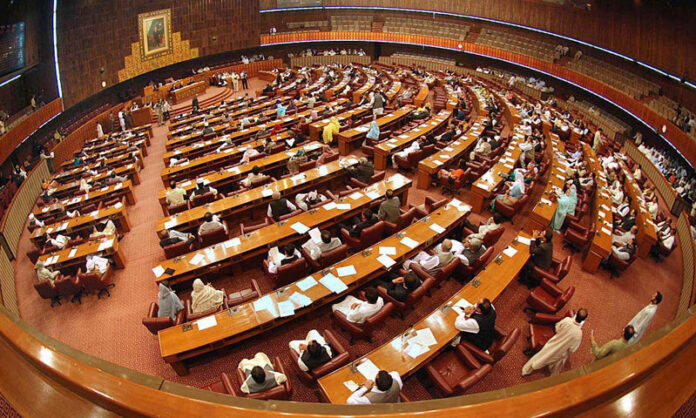The issue of provincial division is fast coming out of the closet and seeing daylight. On 17 January 2022, Rana Mehmood-ul Hassan, a lawmaker of Pakistan Muslim League-Nawaz (PML-N), introduced a private bill in the Senate demanding the division of the Punjab to carve out South Punjab as a separate province. The bill garnered support from both the Pakistan Tehreek Insaf (PTI) and Pakistan People’s Party (PPP).
It has been an election sloganeering to cash in on the sentiments of the residents of South Punjab to secure electoral victory. Presently, the ruling government of the PTI has only established a civil secretariat in Multan, but it has also planned to form another secretariat in Bahawalpur. The civil secretariats would be meant for running by additional secretaries and not chief secretaries, thereby meaning that both Multan and Bahawalpur would be subordinate entities to Lahore.
The issue is more to woo voters of South Punjab than to do anything substantial on the ground. The ruling party, PTI, would have to face the wrath of the voters if it faltered on the issue of dividing the province. The division of the Punjab was one of the major electoral manifestoes of the PTI in South Punjab to win over the affiliations of politicians and voters alike. The PTI has failed to honour its pledge of creating a South Punjab province within the first 100 days of ruling the country. The promise has gone frustrated. The issue is now more a political gimmickry than anything serious. The acrimonious voices would surge as the next polls approach.
The argument supporting the provincial division says that the division is meant for uplifting the rural outlying areas of the province, as development in South Punjab has not been the priority of Lahore. More infrastructure has been laid in central and northern Punjab than in Southern Punjab. The same principle is also applicable to other provinces. This is one of the reasons poverty is more rampant in South Punjab than in the rest of the province. Making a new province can create new financial opportunities.
The creation of any new province would also bring along certain constitutional challenges. Amendments have to be introduced into the Constitution, a renewed Water Accord has to be formulated, the National Financial Commission has to be revised, and the Senate and National Assembly have to be rearranged. It is a gigantic task. Constitutional amendments have to be introduced as one package. It can be done neither on selected basis nor as a piecemeal development. The will of other provinces have to be asked whether or not they require division along linguistic lines.
India is cited as an example to divide existing provinces along linguistic lines. In 1947, India had nine provinces and now it has 22. Nevertheless, India cannot be cited as an example, as ground realities in Pakistan are different. Over the years, the challenge of ethno-cultural nationalism has gone toxic. Under the rubric of Seraiki Sooba, to divide the Punjab along ethnic or linguistic lines is not difficult but the repercussions of this act are quite ominous.
As apparent, ethnic identity and provincial nationalism are the two contenders against the concept of federalism. The factor of ethnic identity remained submerged in the Punjab but each electoral episode incites ethnic identity and hence the division in the Punjab. Ethnic identity and provincial nationalism make a lethal combination. Both existed simultaneously in East Pakistan (Bangladesh)
One of the major menaces is that ethno-cultural nationalism would get an impetus. The major force of brunt would be borne by Sindh where the voice of a separate province for the Urdu-speaking people would re-emerge, visualizing Karachi as a separate province. This would be a call for bloodshed in Sindh. The PPP seems to be oblivious of this expected turn of events. Similarly, in Khyber-Pakhtunkhwa, the voice for Hazara province is still loud meant for dividing the province. In Baluchistan, the Pashtun with numerical majority may ask for a Pashtun province carved out of Baluchistan into a Baluch majority and a Pashtun-majority area. Similarly, northern Punjab consisting of the Potohar area can also demand its separation from Central Punjab.
On the other hand, the challenge is how to improve development in South Punjab to help it overcome its deprivation. Apparently, both the PTI and the PML(N) have a consensus that the proposed Seraiki Sooba should be sub-divided into two administrative units (or sub-provinces): Multan and Bahawalpur. To have separate secretariats in both Multan and Bahawalpur is a good idea, as with the passage of time, the population of the province is increasing, besides the strife for resources.
An associated problem is that politics has gone ethnic and not federal. In the past, the Centre promoted ethnic parties to counterweigh national political parties. For instance, in 1977, the martial law of General Zia-ul-Haq promoted Urdu-speaking groups to dilute the effect of the PPP, which was a national party, in Sindh. He also brutally crushed the Movement for Restoration of Democracy in 1983 and permitted the survival of linguistic parties in Sindh. That is, the PPP faced the problem of existence and relevance in its own home province, Sindh, which still faces the challenge of being divided into urban Sindh and rural Sindh. The policy might have solved immediate problem of Sindhi nationalism after the hanging of the late Zulfiqar Ali Bhutto, but the policy gave rise to today’s seemingly intractable ethno-linguistic problems in Karachi.
As apparent, ethnic identity and provincial nationalism are the two contenders against the concept of federalism. The factor of ethnic identity remained submerged in the Punjab but each electoral episode incites ethnic identity and hence the division in the Punjab. Ethnic identity and provincial nationalism make a lethal combination. Both existed simultaneously in East Pakistan (Bangladesh). Generally, prospects for the division of existing provinces into full fledged new provinces along linguistic lines are dim.























